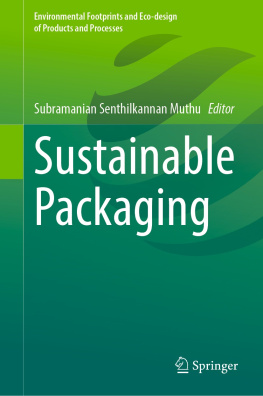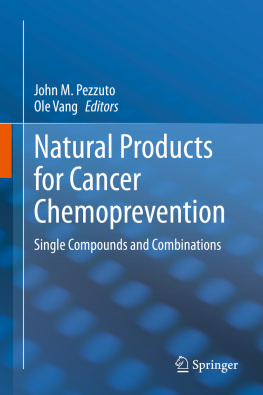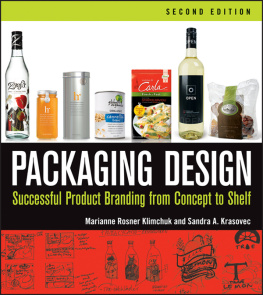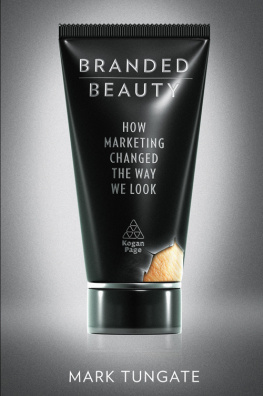John Wiley - Formulating, Packaging, and Marketing of Natural Cosmetic Products
Here you can read online John Wiley - Formulating, Packaging, and Marketing of Natural Cosmetic Products full text of the book (entire story) in english for free. Download pdf and epub, get meaning, cover and reviews about this ebook. City: Hoboken, year: 2011, publisher: John Wiley & Sons, genre: Romance novel. Description of the work, (preface) as well as reviews are available. Best literature library LitArk.com created for fans of good reading and offers a wide selection of genres:
Romance novel
Science fiction
Adventure
Detective
Science
History
Home and family
Prose
Art
Politics
Computer
Non-fiction
Religion
Business
Children
Humor
Choose a favorite category and find really read worthwhile books. Enjoy immersion in the world of imagination, feel the emotions of the characters or learn something new for yourself, make an fascinating discovery.

- Book:Formulating, Packaging, and Marketing of Natural Cosmetic Products
- Author:
- Publisher:John Wiley & Sons
- Genre:
- Year:2011
- City:Hoboken
- Rating:3 / 5
- Favourites:Add to favourites
- Your mark:
- 60
- 1
- 2
- 3
- 4
- 5
Formulating, Packaging, and Marketing of Natural Cosmetic Products: summary, description and annotation
We offer to read an annotation, description, summary or preface (depends on what the author of the book "Formulating, Packaging, and Marketing of Natural Cosmetic Products" wrote himself). If you haven't found the necessary information about the book — write in the comments, we will try to find it.
Formulating, Packaging, and Marketing of Natural Cosmetic Products — read online for free the complete book (whole text) full work
Below is the text of the book, divided by pages. System saving the place of the last page read, allows you to conveniently read the book "Formulating, Packaging, and Marketing of Natural Cosmetic Products" online for free, without having to search again every time where you left off. Put a bookmark, and you can go to the page where you finished reading at any time.
Font size:
Interval:
Bookmark:

Copyright 2011 by John Wiley & Sons, Inc. All rights reserved.
Published by John Wiley & Sons, Inc., Hoboken, New Jersey.
Published simultaneously in Canada No part of this publication may be reproduced, stored in a retrieval system, or transmitted in any form or by any means, electronic, mechanical, photocopying, recording, scanning, or otherwise, except as permitted under Section 107 or 108 of the 1976 United States Copyright Act, without either the prior written permission of the Publisher, or authorization through payment of the appropriate per-copy fee to the Copyright Clearance Center, Inc., 222 Rosewood Drive, Danvers, MA01923, (978) 750-8400, fax (978) 750-4470, or on the web at www.copyright.com . Requests to the Publisher for permission should be addressed to the Permissions Department, John Wiley & Sons, Inc., 111 River Street, Hoboken, NJ 07030, (201) 748-6011, fax (201) 748-6008, or online at http://www.wiley.com/go/permission .
Limit of Liability/Disclaimer ofWarranty: While the publisher and author have used their best efforts in preparing this book, they make no representations or warranties with respect to the accuracy or completeness of the contents of this book and specifically disclaim any implied warranties of merchantability or fitness for a particular purpose. No warranty may be created or extended by sales representatives or written sales materials. The advice and strategies contained herein may not be suitable for your situation. You should consult with a professional where appropriate. Neither the publisher nor author shall be liable for any loss of profit or any other commercial damages, including but not limited to special, incidental, consequential, or other damages.
For general information on our other products and services or for technical support, please contact our Customer Care Department within the United States at (800) 762-2974, outside the United States at (317) 572-3993 or fax (317) 572-4002.
Wiley also publishes its books in a variety of electronic formats. Some content that appears in print may not be available in electronic formats. For more information about Wiley products, visit our web site at www.wiley.com .
Library of Congress Cataloging-in-Publication Data:
Formulating, packaging, and marketing of natural cosmetic products / edited by Nava Dayan, Lambros Kromidas C.
p. cm.
ISBN 978-0-470-48408-1 (cloth)
1. CosmeticsComposition. 2. Cosmetics containers. 3. Organic compounds.
I. Dayan, Nava. II. Kromidas, Lambros.
TP983.F595 2011
668.55dc22
2010054045
oBook ISBN: 9781118056806
ePDF ISBN: 9781118056783
ePub ISBN: 9781118056790
Preface
From an early age, we learn to discern what is natural and what is not. A child knows that a deer is part of nature and a car is not. He may not be able to explain exactly why, but he has, even at this early age, an innate understanding of natural things. The deer is not manmade and cannot be controlled or designed, while the car can be designed by man to assume many shapes and functions. The same can be said about cosmetic chemist, manufacturers, marketers, and consumers of natural cosmetics. The issue with natural cosmetics is that unlike trees, deer, fish, flowers, and so on they are not found in or made by nature. They are manufactured like a car, chair, fork, and a multitude of other items. So how can a manufactured cosmetic product claim to be natural? Some may claim that cosmetics made of all natural products are natural. That sounds reasonable. Does that mean then that a fork made of unprocessed wood is natural? A child may not think so because even though the wood is natural, the finished product does not look natural and involved extensive human intervention. Likewise, many do not think cosmetics are natural even if they are made of natural components. If there is a natural cosmetic, it will be one of the many fruits or berries found in nature that may be used to color ones skin by using their substance. If used in such a manner and for the purpose of coloring the skin, one can argue that berry is a natural cosmetic. For many of us, it may be the packaging and manufacturing parts that make it difficult to accept the concept that a cosmetic on the drug store shelf could be natural. Be that as it may, one cannot argue with something made of all natural components even if manufactured by big noisy steel machines and packaged in an artificial container (i.e., a container not made of natural components). But for argument's sake, let us accept the paradigm that such a product is a natural product. Can a cosmetic then be made of all natural components? Some hardcore natural cosmetic chemists may think so, but for the majority the lack of a variety of natural functional ingredients is a rate-limiting step in the development. What percentage of natural components included in the formula will qualify it to claim that it is natural? Furthermore, how would one classify natural ingredients? For some, it matters how they were gathered and processed before use. Regardless, even the hardcore natural cosmetic chemist will have to admit that the palate, aesthetics, and stability of cosmetics made of all natural products will be severely limited and compromised. However, the trends of the past two decades clearly indicate that a large part of the population is striving to get back to nature, as they say. As such, natural has become a created homeostasis outside God's or evolution's responsibility. While it is the nature of life in many poor third world countries, in the Western developed world, the getting back to nature trend is mostly driven by the wealthier population that can afford shopping for organic and unprocessed food, vitamins and supplements, and alternative medicinal practices.
When it comes to cosmetics and personal care, this sense of natural confusion and created homeostasis has penetrated almost every aspect of product development: from the sourcing and definitions of raw materials used, to the design of the formulations, and to the testing requirements, regulations, and their enforcement. Many of us in the cosmetic industry did not and do not know how to digest this new paradigm of natural cosmetics, and how to translate it to practicality. This book is an attempt to mitigate the confusion over natural cosmetics and is designed to provide the reader with the basic tools and ideas to develop naturally derived formulations. This book is neither developed by hardcore natural cosmetic scientists, manufacturers, or marketers who want to push their own unique agenda. Nor is it designed to champion any special interest group's agenda. It is tailored by conventional cosmetic scientists whose agenda is to merely make sense of this business opportunity. We specifically chose contributors associated with our industry but from varied walks of life, backgrounds, and specialties to give a fresh outlook on the subject matter. Our contributors had no preconceived interests in natural cosmetics but were eager to advise, enlighten, and guide the reader whose interest is to take the primary steps toward formulating, packaging, and marketing of natural cosmetic products.
Working with these contributors was a wonderful learning experience and we thank them sincerely.
Lambros Kromidas
Nava Dayan
Contributors
Eric Antignac , L'oreal R&D, Worldwide Safety Evaluation, Asnieres, France
Anne Marie Api , Research Institute for Fragrance Materials, Inc., Woodcliff Lake, NJ
MaryJoy Ballantyne , Covington & Burling LLP, Washington, DC
Sonali Bose , Department of Pharmaceutics, Ernest Mario School of Pharmacy, New Jersey Center for Biomaterials, Rutgers, The State University of New Jersey, Piscataway, NJ; Novartis Pharmaceuticals Corporation, East Hanover, NJ
Font size:
Interval:
Bookmark:
Similar books «Formulating, Packaging, and Marketing of Natural Cosmetic Products»
Look at similar books to Formulating, Packaging, and Marketing of Natural Cosmetic Products. We have selected literature similar in name and meaning in the hope of providing readers with more options to find new, interesting, not yet read works.
Discussion, reviews of the book Formulating, Packaging, and Marketing of Natural Cosmetic Products and just readers' own opinions. Leave your comments, write what you think about the work, its meaning or the main characters. Specify what exactly you liked and what you didn't like, and why you think so.











